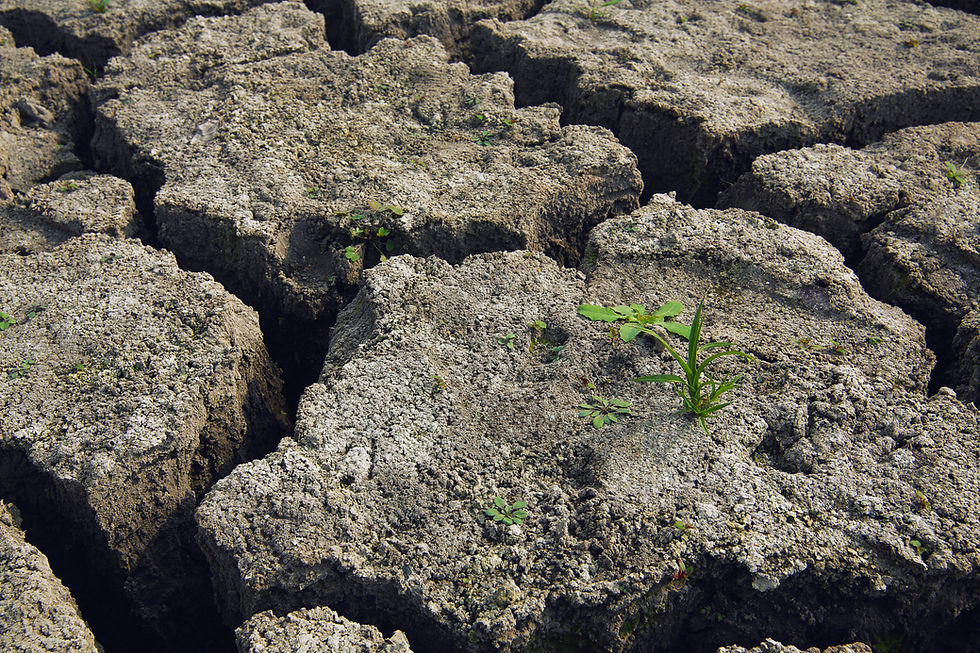How Drought Affects The Future of Countries? - Zeynep Eğin
- Zeynep Eğin
- Nov 14, 2022
- 3 min read

As a result of global warming and increasing emissions, the earth is beginning to witness more frequent extreme occurrences and critical climate concerns such as heat waves, torrential rain, and searing droughts. Due to the extreme heat, drought has contributed to an upsurge in hunger in recent years. In other words, rising temperatures cause more evaporation, which reduces surface water, and dries up soils, which results in a decrease in the yield of agricultural activities and higher rates of hunger.
While these crucial issues affect our lives, it is concerning that they would have even more destructive impacts on populations that are already at peril. Therefore mainly, developing countries require international assistance to finance adaptation. A recent report by the United Nations Intergovernmental Panel on Climate Change outlined the alarming repercussions of failing to slow global warming. Adaptation should address climate change and extreme weather hazards, such as protecting crops, mitigating the impact of rising seas, and strengthening infrastructure. These financial adaptations are necessary for all countries and will provide a safety net for developing countries that are particularly vulnerable.
According to the World Food Program, climate change is the second-leading cause of hunger after armed conflict, and the worsening climate change paved the way for stressful life conditions and food insecurity for millions around the world. Currently, 80% of people who experience hunger reside in regions that frequently experience natural disasters and severe weather, which creates a suitable environment for hunger to spread. Moreover, since droughts prevail longer and occur more frequently compared to previous years, they will have more disastrous effects.
"This is the worst drought that these countries have faced in 40 years," said Lia Lindsey, a senior humanitarian policy advisor at Oxfam America. "As we see greenhouse emissions increasing, we are seeing the severity of extreme weather events, like drought in this area, increase not only in frequency but also in severity." The International Food Policy Research Institute's new report on climate change and food systems reinforce this statement; according to the report, climate change might reduce food production by 16% and increase the number of people at risk of hunger by 23% by 2030.
For a populous, developing nation like India, the drought only exacerbates the rising tide of hunger. In India, where agriculture contributes significantly to the country's economy, an increase in hunger is an unavoidable result of decreased productivity due to drought. This situation not only impacts the country's economy but also generates more significant issues, such as starvation.
In India, 189.2 million people are malnourished, which equals 14% of people in India, according to the Food and Agriculture Organization of the United Nations (FAO) estimates in "The State of Food Security and Nutrition in the World, 2020 report." Moreover, the number of Indians at risk of hunger in 2030 is estimated to be 73.9 million, with the effects of climate change increasing the figure to 90.6 million. Under identical conditions, the aggregate food production index would fall from 1.6 to 1.5.
Iraq is a second country that may be used as an example after India, which is currently experiencing the harmful consequences of drought.
On October 17, FAO and the World Food Program (WFP) in Iraq published a joint statement on the future of Iraq's agriculture and food security for World Food Day. The drought in Iraq prompted the two organizations to call for immediate action to address the underlying causes of the recent food and water crisis.
"Iraq has been experiencing increased drought for the past two years, brought about by the rising temperatures, reduced rainfall which is the lowest in 40 years in addition to reduced water flows in Tigris and the Euphrates rivers," the statement said. "This led to degradation of arable land, increased water, and soil salinity, which all contribute to serious loss of livelihoods and an increased pressure on the national state budget, which imports cereals to ensure enough food is available to the population."
The fact that agriculture is a significant part of Iraq's economy worsens the problem. Almost 20% of Iraq's citizens are employed in the agriculture sector, which accounts for 5% of the country's overall GDP and is the second-largest contributor to GDP after the oil industry. Therefore, the growth of agriculture is essential for enabling Iraq to develop.
With the threat of droughts resulting from climate change, the effort to eradicate poverty has become more challenging. Climate change, hunger, and malnutrition must all be addressed to diminish their effects not only on human lives but also on the acquirement of resources. Immediate action is crucial, and measures should be taken before it is too late, especially for nations already suffering from the consequences of drought.




Comments